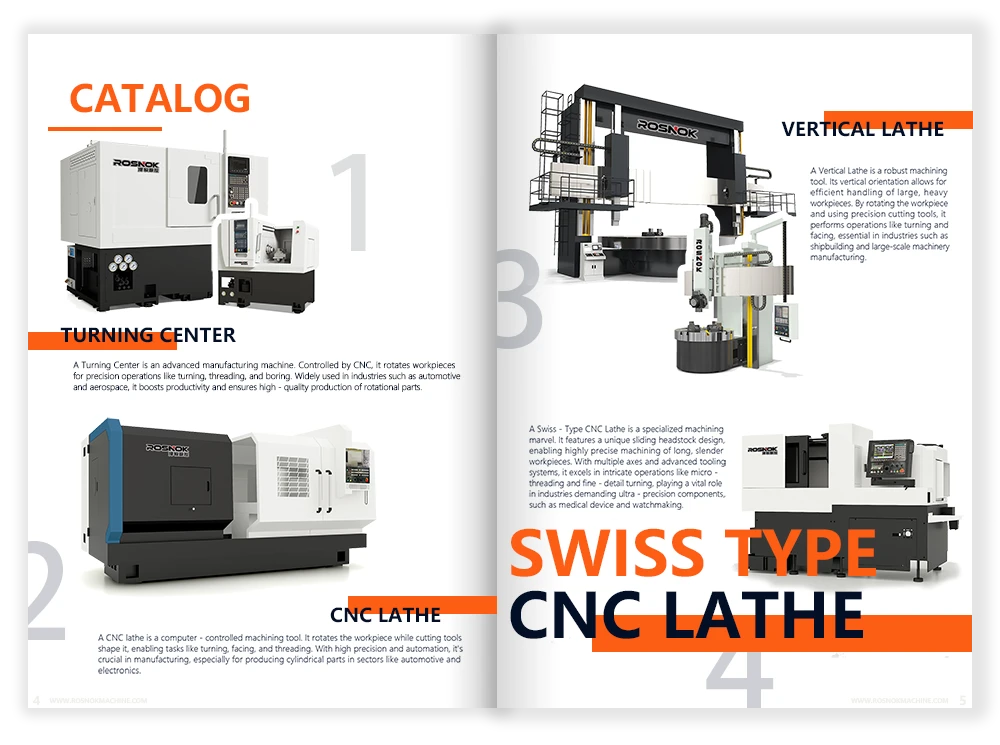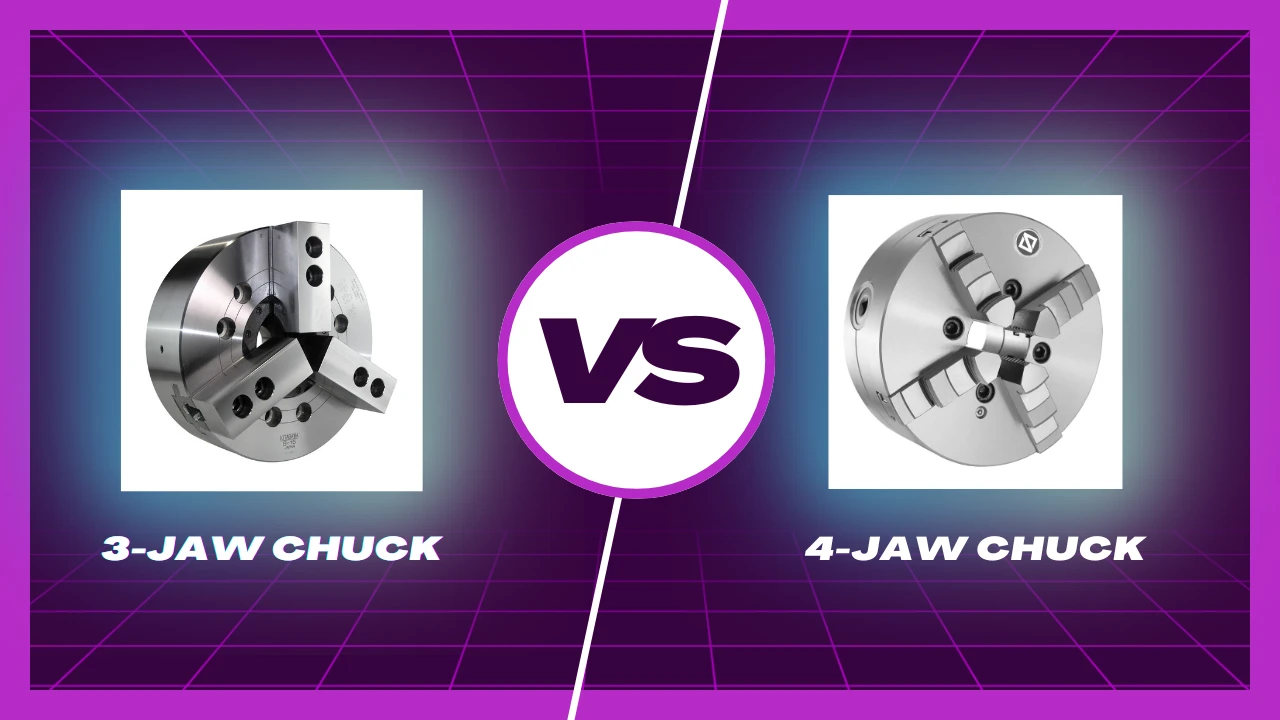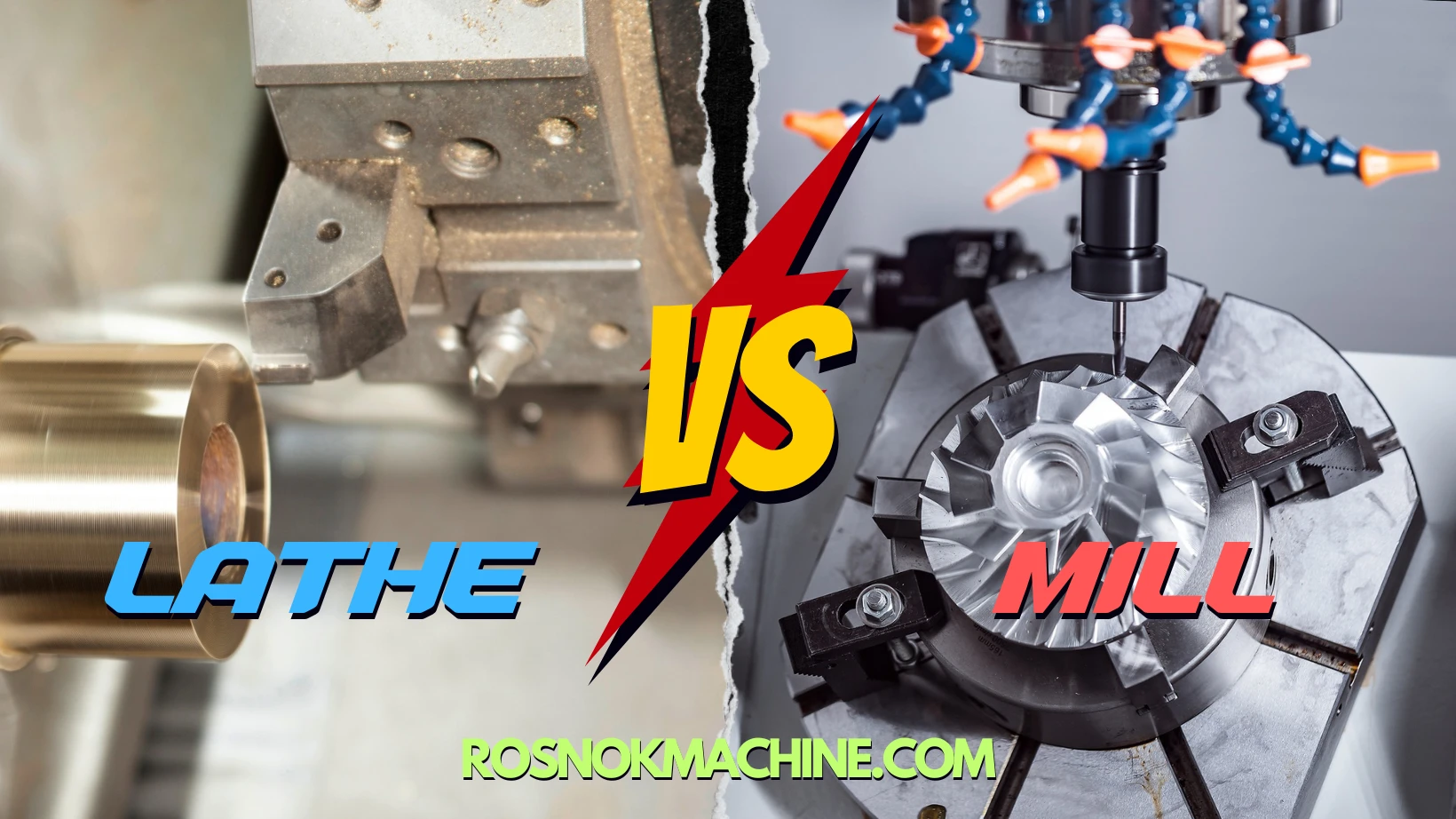Have you ever compared a 3-jaw vs 4-jaw chuck and wondered which performs better on your lathe machine? Many machinists struggle with this decision every day — the wrong choice can lead to poor clamping, reduced accuracy, and lower efficiency, especially when handling precision or irregular parts.
The 3 jaw chuck is best for speed and convenience. It self-centers round or hex stock, reduces setup time, and suits most general turning jobs. The 4 jaw chuck, on the other hand, offers superior accuracy, versatility, and holding power. Its independent jaws let you true parts to zero runout, clamp square or irregular shapes, and even offset for eccentric turning. Understanding their strengths helps you choose the right chuck for every machining need.
In the following sections, I’ll explain the 3 jaw vs 4 jaw chuck comparison in depth — exploring their structure, working principles, performance differences, typical applications, and how to choose the right one for your lathe.
What Is a Lathe Chuck and Why It Matters
Have you ever watched a lathe in motion and noticed how precisely the workpiece stays in place, even at high speed? That accuracy and stability all come down to one essential component — the lathe chuck. In simple terms, a chuck is the device that securely holds the workpiece on the lathe spindle during machining. Whether cutting, facing, or threading, every operation relies on the chuck’s ability to grip the material firmly and rotate it smoothly.
In a lathe machine, the chuck plays the same role as a hand in craftsmanship — it controls, stabilizes, and aligns. Without a proper chuck, no tool, no matter how advanced, could produce accurate results. The chuck not only determines how firmly the part is clamped, but also how concentric and balanced it remains while rotating. Any small misalignment can lead to vibration, poor surface finish, or even damage to both the workpiece and the cutting tool.
There are several types of lathe chucks used in the machining industry. The most common ones are manual chucks, hydraulic chucks, and pneumatic chucks.
- Manual chucks are operated with a key or wrench — simple, reliable, and commonly used on smaller or manual lathes.
- Hydraulic chucks use fluid pressure to open and close the jaws automatically, ideal for CNC lathes that require high-speed production and repeat accuracy.
- Pneumatic chucks, driven by compressed air, offer quick operation for medium-scale production and semi-automated setups.
Beyond the act of gripping, the chuck’s design directly affects machining accuracy, efficiency, and safety. A well-made chuck reduces vibration, improves tool life, and ensures the workpiece stays perfectly centered — all critical factors for precision metalworking. The difference between a high-quality and poorly designed chuck can mean the difference between consistent production and costly downtime.
That’s why choosing between a 3 jaw vs 4 jaw chuck isn’t a simple matter of preference — it’s a technical decision that determines how your lathe performs. Each type offers distinct strengths, structures, and ideal applications. To understand these differences clearly, let’s first take a closer look at how both 3-jaw and 4-jaw chucks work.
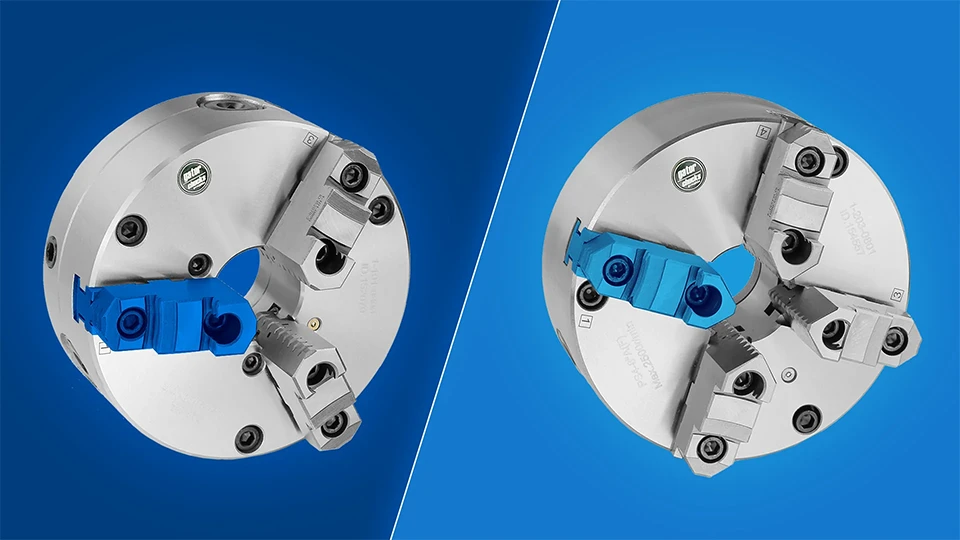
3-Jaw vs 4-Jaw Chuck: Understanding 3-Jaw Chucks
When most machinists picture a lathe chuck, the 3-jaw chuck is usually the one that comes to mind. It’s the most common type found on both manual and automatic lathes, prized for its simplicity, reliability, and quick setup time. The 3-jaw chuck is designed to hold round or hexagonal workpieces securely, making it the standard choice for general turning operations.
Structure and Working Principle
A 3-jaw chuck operates on a self-centering mechanism. Inside its body lies a scroll plate — a spiral-shaped disk that connects all three jaws through a system of bevel gears. When the operator turns the chuck key, the scroll plate rotates, causing all jaws to move simultaneously either inward or outward. This synchronized motion automatically centers the workpiece, allowing for fast and consistent clamping.
Because the jaws move together, the 3-jaw chuck maintains high concentricity — meaning the workpiece remains precisely aligned with the spindle axis. This is essential when machining cylindrical parts like rods, shafts, or pipe fittings. The self-centering design also saves time, especially in batch production or repetitive setups, where consistent clamping is more valuable than micro-adjustments.
However, this convenience comes with a limitation: the 3-jaw chuck’s fixed movement means individual jaws cannot be adjusted independently. So while setup is fast, it sacrifices flexibility when dealing with irregular shapes or offset turning.
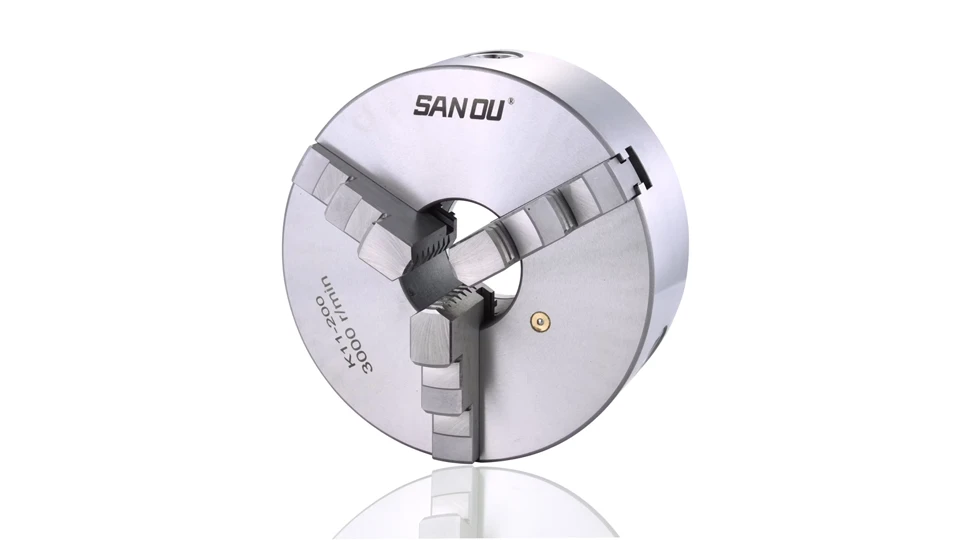
Advantages of 3-Jaw Chucks
The greatest advantage of a 3-jaw chuck lies in efficiency. Because all jaws move together, setup time is drastically reduced. A workpiece can be loaded, centered, and tightened in seconds — a major benefit for production environments.
Other benefits include:
- Automatic centering: no manual adjustments required.
- Good repeatability: consistent accuracy for multiple identical parts.
- Smooth rotation: balanced clamping ensures less vibration at high speeds.
- Versatility: suitable for most round or hexagonal materials.
These strengths make the 3-jaw chuck an ideal tool for industries like automotive and metal component manufacturing, where speed and repeat precision are critical.
Limitations of 3-Jaw Chucks
While convenient, the 3-jaw chuck isn’t perfect for every job. Because all jaws move together, it cannot hold irregular or square parts securely. It’s also difficult to adjust for zero runout, as there’s no way to fine-tune individual jaws. This can affect surface finish and dimensional precision when working on tight-tolerance parts.
Additionally, holding force is moderate, which limits its suitability for heavy or interrupted cuts. In such cases, vibration may increase, and the part can shift slightly under load. This is why precision machinists and toolmakers often switch to a 4-jaw chuck when working on complex shapes or when perfect concentricity is required.
In short, the 3-jaw chuck is the workhorse of general turning — fast, efficient, and reliable — but not always the most precise or versatile option.
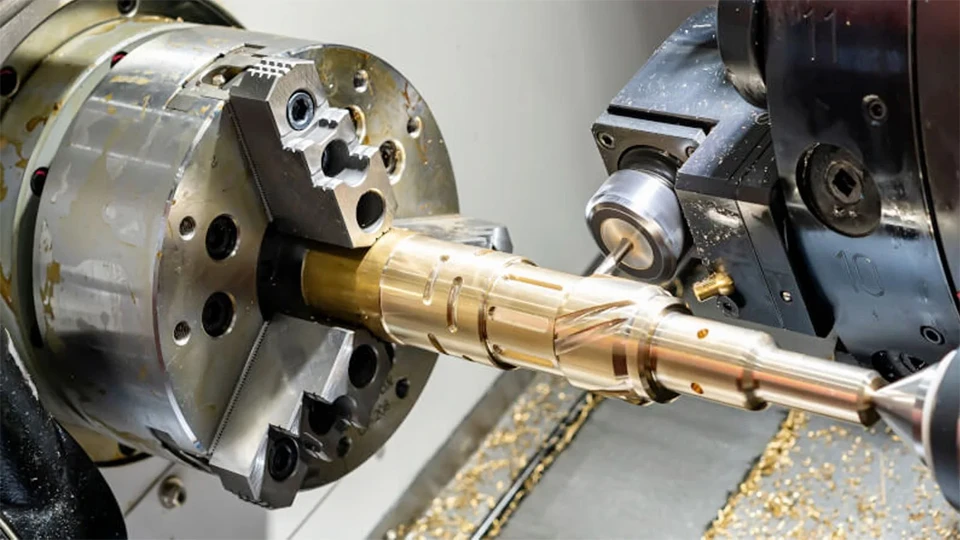
3-Jaw vs 4-Jaw Chuck: Understanding 4-Jaw Chucks
While the 3-jaw chuck is built for speed and convenience, the 4-jaw chuck represents control, flexibility, and precision. Each jaw moves independently, giving machinists the power to hold irregular, square, or even eccentric workpieces with exceptional accuracy. It’s the preferred choice for custom fabrication, one-off jobs, and precision machining where every micron counts.
Structure and Working Principle
A 4-jaw chuck differs fundamentally from its 3-jaw counterpart. Instead of a scroll plate connecting all jaws, each jaw is mounted on a separate screw mechanism and can be moved independently using a chuck key. This independent control allows the operator to manually adjust each jaw to grip the workpiece exactly where needed — perfectly centered, intentionally offset, or held at an angle.
When setting up, the machinist typically uses a dial indicator to check concentricity. By tightening and loosening the jaws one at a time, the operator can align the workpiece with incredible precision — often achieving zero runout. This makes the 4-jaw chuck indispensable for parts that must be machined to exact tolerances or for eccentric turning operations where the part’s center must be offset on purpose.
Because of its manual nature, setup takes more time and skill, but the payoff is greater control. The 4-jaw chuck turns the lathe into a precision tool capable of holding any shape — round, square, rectangular, or irregular.
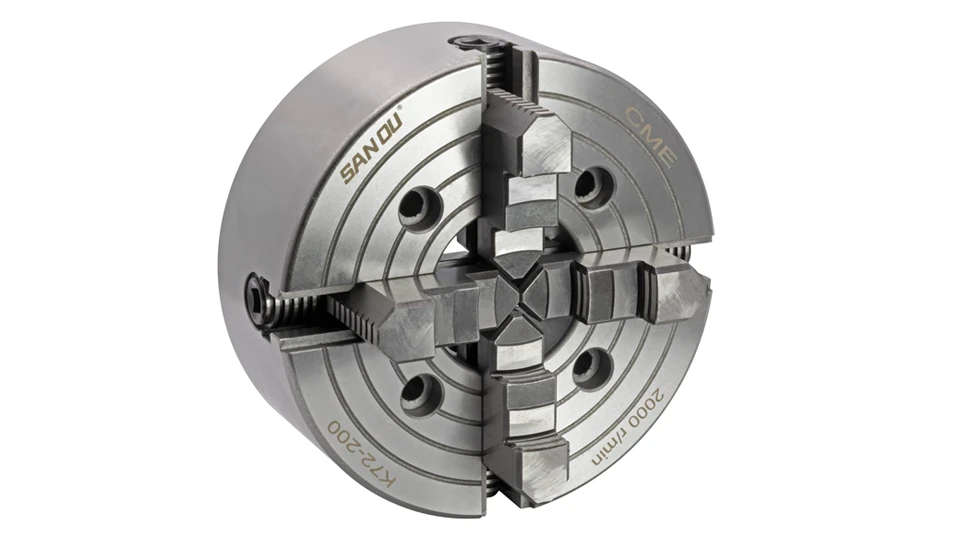
Advantages of 4-Jaw Chucks
The 4-jaw chuck’s key advantage is ultimate precision. By allowing each jaw to move separately, machinists can eliminate even the smallest deviation in concentricity. Here are its major strengths:
- Independent adjustment: each jaw can be fine-tuned for perfect alignment.
- Zero runout potential: essential for precision parts or toolmaking.
- Strong clamping power: adjustable pressure on each jaw for heavy or asymmetrical loads.
- Versatile workholding: grips square, rectangular, and irregular shapes easily.
- Eccentric turning capability: can deliberately offset the workpiece center for specialized machining.
These benefits make the 4-jaw chuck the tool of choice in industries such as aerospace, mold manufacturing, and custom metalworking, where precision outweighs speed.
Limitations of 4-Jaw Chucks
Despite its precision, the 4-jaw chuck isn’t ideal for every task. Because each jaw must be adjusted individually, setup is time-consuming, especially when dealing with multiple parts or high-volume production. This makes it less efficient for repetitive machining or automated lines.
Another challenge is operator skill — achieving zero runout requires experience, patience, and the use of proper measuring tools. Beginners may find the process slow or inconsistent.
Finally, since each jaw moves independently, it can be slightly imbalanced during high-speed rotation if not properly aligned. This limits its use in extremely high RPM applications where stability and balance are critical.
In short, the 4-jaw chuck is not about speed — it’s about precision. It gives machinists the flexibility to hold any shape with exact control, but it demands skill and time in return.
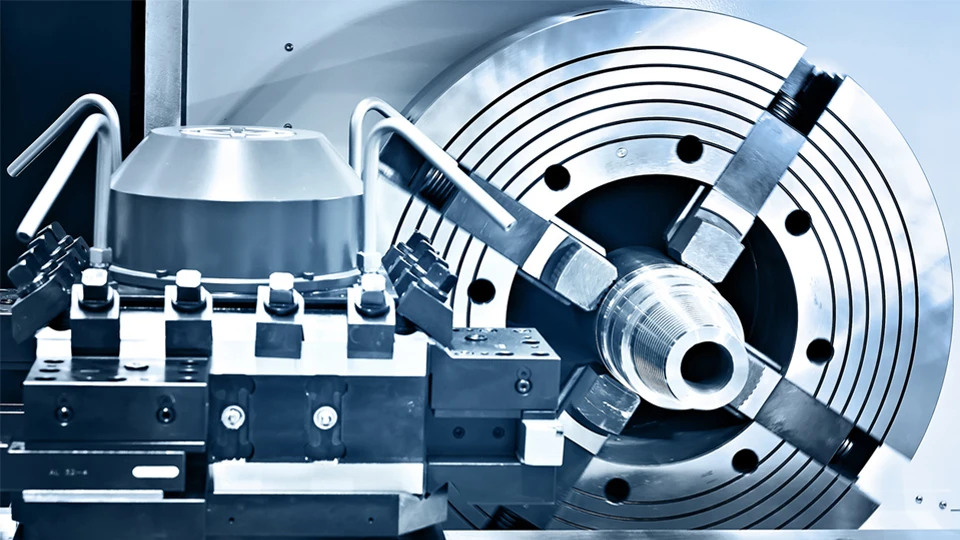
Key Differences Between 3-Jaw and 4-Jaw Chucks
After understanding how each chuck works, it’s clear that the 3-jaw and 4-jaw chucks serve very different purposes on a lathe.
Both are essential, but they excel in different ways — one prioritizes speed and convenience, the other focuses on accuracy and control.
Below is a detailed breakdown of their key differences to help you choose the right one for your machining needs.
| Aspect | 3-Jaw Chuck | 4-Jaw Chuck |
|---|---|---|
| Clamping Mechanism | Self-centering – all jaws move together through a scroll plate. | Independent jaws – each jaw moves separately using a screw mechanism. |
| Setup Time | Very quick setup; workpiece centers automatically. | Slower setup; requires manual alignment with a dial indicator. |
| Accuracy & Concentricity | Good concentricity for round parts but limited adjustment; cannot reach true zero runout. | Can achieve perfect centering or intentional offset; ideal for precision work. |
| Workpiece Shape Compatibility | Best for round and hexagonal materials. | Handles square, rectangular, irregular, and eccentric parts. |
| Holding Power | Moderate; suitable for light to medium cuts. | Strong; can apply high clamping force for heavy or interrupted cuts. |
| Machining Flexibility | Limited; mainly for symmetrical parts. | Highly flexible; allows custom setups for any shape. |
| Skill Requirement | Easy to use, ideal for beginners and production operators. | Requires skill and patience to center accurately. |
| Best Use Case | High-volume production, general turning. | Precision machining, toolmaking, custom work, or eccentric turning. |
In simple terms, the 3-jaw chuck is your choice when efficiency and repeatability matter most — it’s fast, consistent, and ideal for round parts.
The 4-jaw chuck, by contrast, is the expert’s tool: slower to set up but capable of precision beyond what a 3-jaw can offer.
When choosing between the two, it’s not about which is better overall, but which is better for your specific task.
A production shop machining hundreds of shafts daily will naturally prefer a 3-jaw chuck, while a toolmaker shaping an asymmetrical mold insert will reach for a 4-jaw every time.
Both are indispensable in any well-equipped workshop — each type complements the other.
Mastering when and how to use them effectively is a hallmark of an experienced machinist.
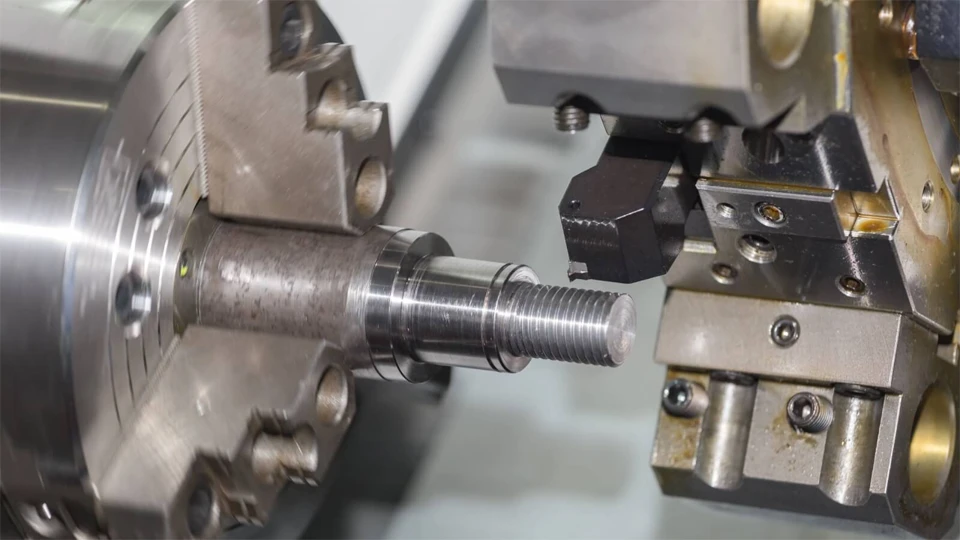
How to Choose Between 3-Jaw and 4-Jaw Chucks
Selecting between a 3-jaw and 4-jaw chuck is not a random choice — it’s a technical decision that should be made based on machining priorities, workpiece geometry, and operator capability.
By understanding these core factors, you can ensure the chuck you choose matches both your production goals and your precision requirements.
Define Your Machining Priorities
Every machining task begins with a goal.
Ask yourself: do you need speed and consistency, or precision and control?
- If your priority is productivity — producing a large number of round or symmetrical parts — the 3-jaw chuck is the clear choice. Its self-centering design minimizes setup time and keeps production flowing.
- If your focus is accuracy, alignment, or custom geometry, the 4-jaw chuck offers the flexibility to fine-tune concentricity, even for irregular workpieces.
Think of it this way: 3-jaw for efficiency, 4-jaw for perfection.
Match the Chuck to Your Workpiece Geometry
The geometry of your material determines which chuck can hold it best.
- For round or hexagonal bars, a 3-jaw chuck provides fast and stable clamping.
- For square, rectangular, or uneven workpieces, only a 4-jaw chuck can secure them correctly.
- If the workpiece is heavy or asymmetrical, the adjustable jaws of a 4-jaw chuck deliver stronger, more reliable grip.
Always remember: poor clamping equals poor machining.
Choosing a chuck that matches the workpiece shape is the foundation of safe, accurate turning.
Evaluate Operator Skill and Setup Time
Operator experience plays a bigger role than most people realize.
- For beginners or high-throughput environments, the 3-jaw chuck offers simplicity — fast loading and automatic centering reduce human error.
- For experienced machinists, the 4-jaw chuck provides maximum control over alignment and runout correction, allowing for precision setups that standard chucks can’t achieve.
In practice, skill and patience often determine whether a 4-jaw chuck becomes a tool of frustration or mastery.
The Balanced Approach
Most professional workshops don’t rely on just one chuck type — they use both.
The 3-jaw chuck handles daily production runs and repetitive turning jobs efficiently,
while the 4-jaw chuck is reserved for precision work, custom parts, or complex shapes.
For greater flexibility, many modern lathe machines now support combination or quick-change chucks,
allowing operators to switch between self-centering and independent modes within minutes.
This adaptability helps maintain both productivity and precision without compromising either.
Expert Insight
Choosing the right chuck is less about preference and more about understanding your machining ecosystem.
Consider these three principles:
- Match your chuck to your accuracy goals.
- Adapt your setup to your workpiece shape and weight.
- Balance your investment between efficiency and versatility.
A properly chosen chuck not only improves machining quality — it extends tool life, reduces vibration, and maximizes overall machine performance.
That’s why, in professional workshops, chuck selection is seen as part of process engineering, not merely a tooling-and-fixturing choice
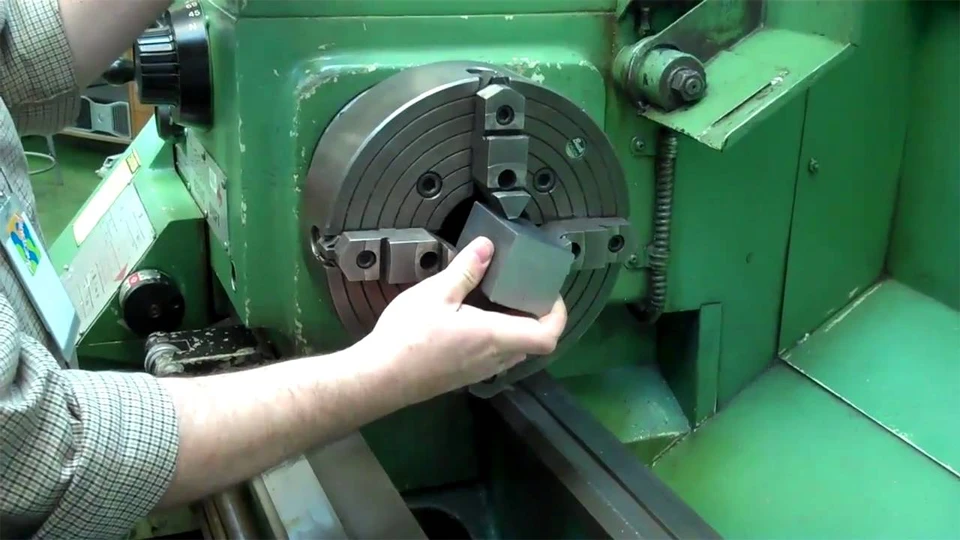
Conclusion
Every great machining result starts with a secure grip. I’ve seen the frustration of parts scrapped because of poor clamping, and I’ve seen the quiet satisfaction that comes when everything runs true — smooth, accurate, and repeatable. In the end, choosing between a 3-jaw and 4-jaw chuck isn’t about preference; it’s about control. The 3-jaw chuck delivers speed, balance, and simplicity for repetitive round parts, while the 4-jaw chuck offers accuracy, flexibility, and strength for complex or irregular workpieces. The smartest machinists don’t choose one over the other — they understand when each delivers its best performance. Define your goals, match the chuck to your geometry, and balance setup time with precision. That’s how consistent excellence is built on the lathe.
At Rosnok, we live this principle every day. Our engineers design and manufacture lathes that integrate seamlessly with both 3-jaw and 4-jaw systems, ensuring precision clamping across every operation — from heavy-duty production to fine detail turning. Each machine we produce reflects the same belief shared by every skilled machinist: that true accuracy begins with the perfect hold. If your next project demands reliability, precision, and adaptability, our team is ready to help you choose the right foundation for success — one chuck, one setup, one perfect cut at a time.
